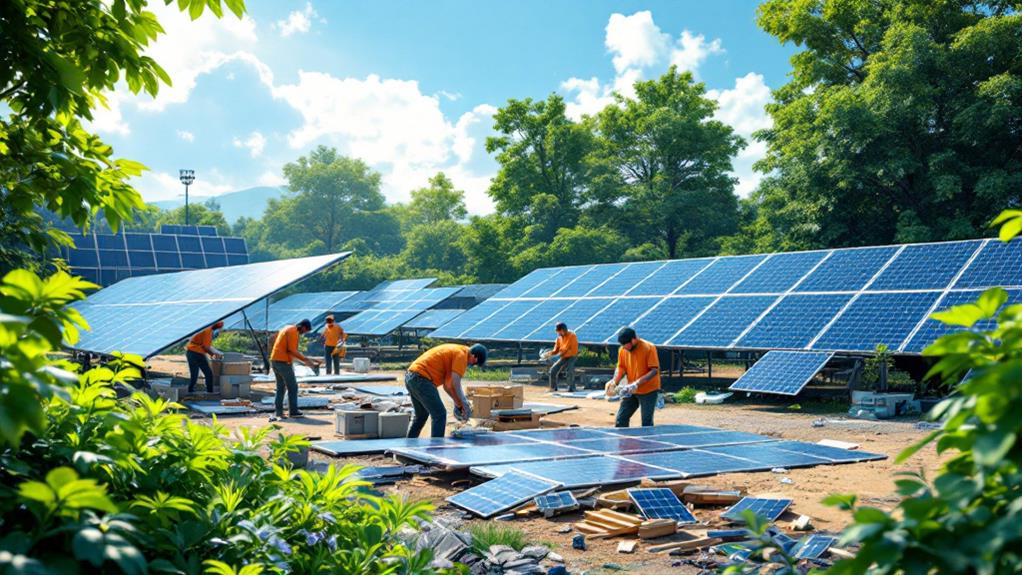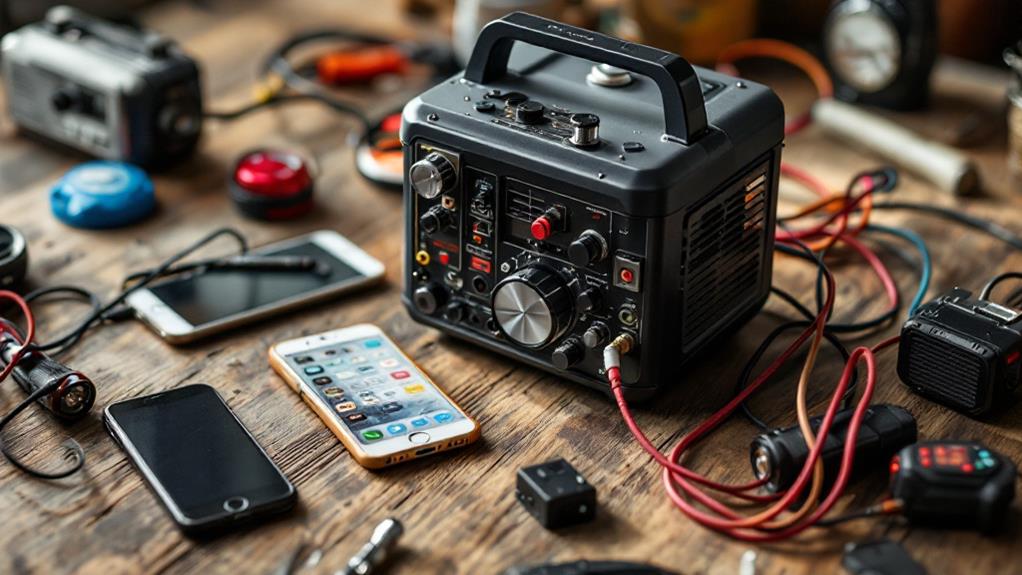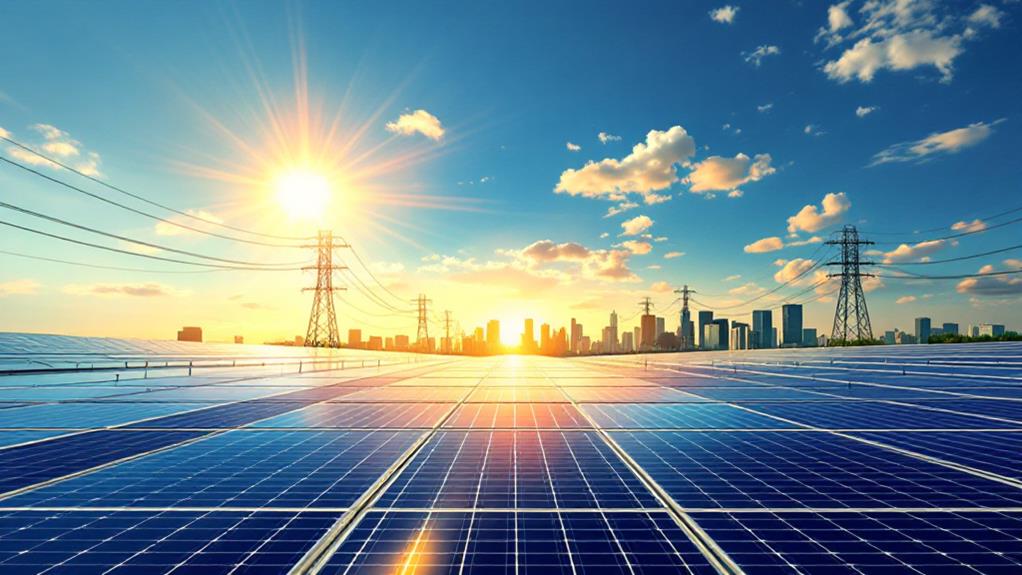Are Solar Chargers Waterproof? What You Need to Know for Outdoor Use
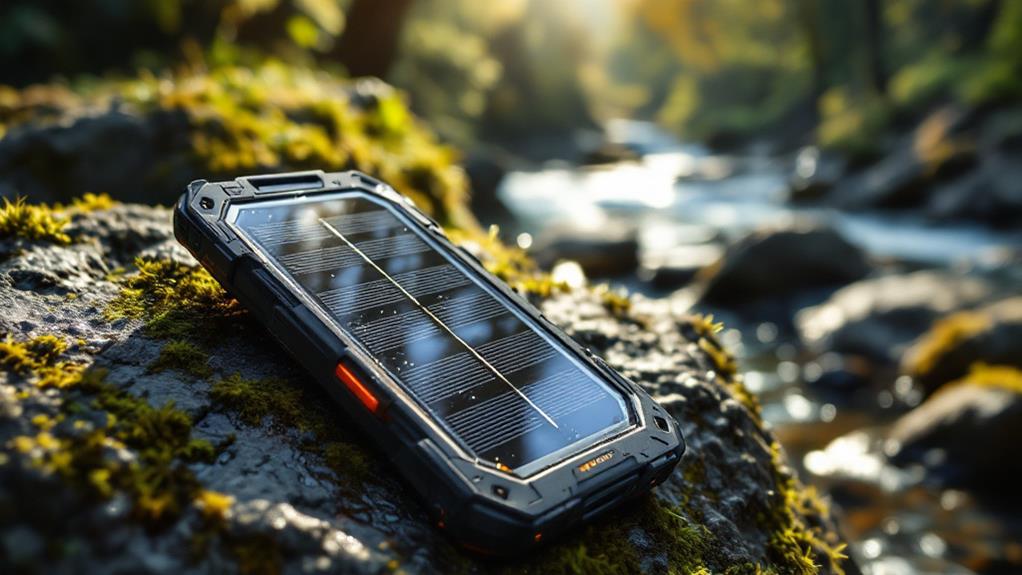
When you're taking your solar charger outdoors, it's essential to know if it's waterproof. Waterproof chargers can withstand full submersion, while water-resistant ones handle minor splashes. Check the IP rating: the higher the second digit, the better it handles water. For example, an IP67 charger can resist temporary immersion. It's wise to choose a charger that matches your outdoor plans and environmental conditions. Consider durability and efficiency as well, especially when weather becomes unpredictable. By selecting wisely and maintaining it properly, you can enjoy continuous power during your adventures. There's more to uncover about choosing the right gear for the outdoors.
Understanding Solar Charger Basics
When you plunge into the world of solar chargers, you'll quickly grasp the fundamental components and how they work. At the heart of any solar charger lies solar technology, which involves converting sunlight into electricity. This technology typically uses photovoltaic (PV) cells, often made of silicon, to capture and convert solar energy. As you investigate different models, you'll notice that the number and quality of these cells greatly impact charging efficiency. High-efficiency cells allow chargers to generate more power in less time, even when sunlight is limited.
Understanding charging efficiency is essential when selecting a solar charger. Efficiency determines how well a solar charger converts sunlight into usable energy. Higher efficiency means faster charging times for your devices, which is particularly vital when you're on the go or in areas with inconsistent sunlight. You'll want to look for chargers that enhance energy output while minimizing energy loss.
In your quest for the perfect solar charger, consider factors like portability, weight, and ease of use. Prioritize models with efficient solar technology that meet your specific needs, ensuring you can keep your devices powered, no matter where your adventures take you.
Waterproof vs. Water-Resistant
Although the terms "waterproof" and "water-resistant" are often used interchangeably, they actually describe different levels of protection against moisture intrusion. When you're planning to use a solar charger outdoors, understanding these differences is vital. Waterproof materials provide a higher level of protection, ensuring your device remains unaffected even when submerged in water. In contrast, water-resistant products can handle some exposure to moisture but aren't designed for full immersion.
When choosing a solar charger, consider these factors:
- Material Type: Waterproof materials often include advanced coatings or seals that prevent water from penetrating the device.
- Intended Use: If you're frequently in rainy or wet environments, opting for a waterproof charger might be more suitable.
- Environmental Impact: Some waterproof materials might have a higher environmental impact due to the chemicals involved in their manufacturing process.
Selecting the right level of protection for your solar charger depends on where and how you plan to use it. While water-resistant chargers might suffice for occasional outdoor use, waterproof options offer peace of mind in more challenging conditions. It is important to weigh the benefits and potential environmental impacts to make an informed decision.
IP Ratings Explained
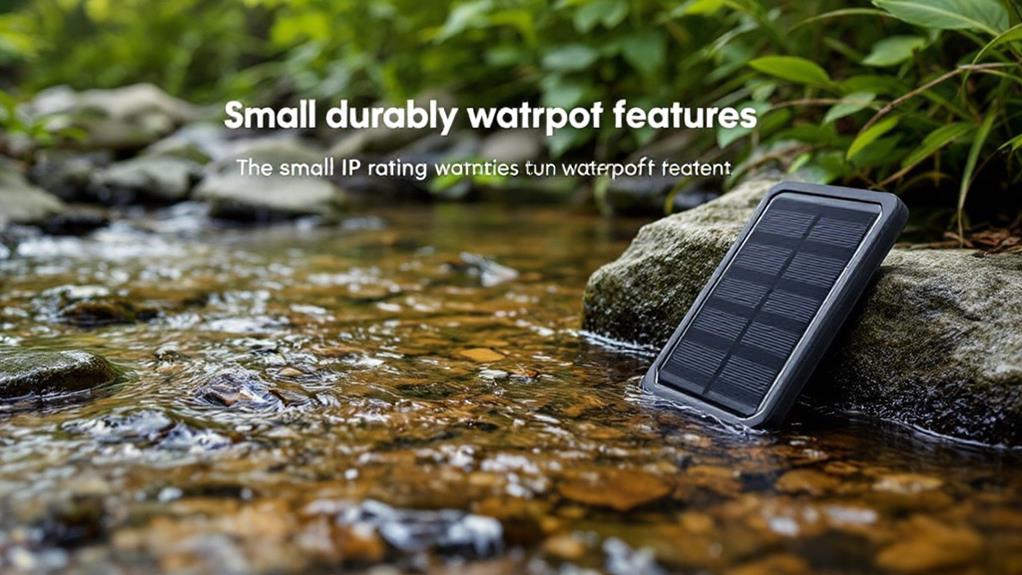
IP ratings are essential for understanding the level of protection your solar charger offers against dust and water. These ratings, short for Ingress Protection, are part of a standardized system that helps you assess the durability standards of electronic devices. When you're out in unpredictable weather, knowing your charger's IP rating guarantees it can withstand the elements.
IP ratings consist of two numbers. The initial number indicates protection against solid objects like dust, ranging from 0 (no protection) to 6 (complete protection). The second number shows water resistance, spanning from 0 (not protected) to 9 (protected against high-pressure water jets and steam cleaning). For example, an IP67 rating means the charger is dust-tight and can withstand temporary immersion in water.
Understanding these ratings helps you make informed choices when selecting gear for outdoor activities. Keep in mind that manufacturers test devices under controlled conditions, so real-world performance might vary. By focusing on IP ratings, you can match your solar charger to your specific needs, guaranteeing it meets necessary durability standards. So, when planning your next adventure, check these ratings to avoid unexpected issues and keep your devices safe.
Best Waterproof Solar Chargers
With a solid understanding of IP ratings, you can confidently choose the best waterproof solar chargers that suit your outdoor needs. These devices provide convenient, portable power, making them a crucial part of your camping gear. Regardless of you're trekking through the wilderness or lounging by the beach, having a reliable solar charger guarantees your gadgets stay powered up without interruption.
Here are three standout options to evaluate:
- Anker 21W Solar Charger: Known for its durability, it features an IP64 rating, meaning it can withstand splashes and dust. It's a lightweight option, perfect for backpackers looking to save on space and weight.
- BigBlue 28W Solar Charger: With a robust IPX4 rating, this charger offers more protection against water exposure. It's designed with foldable solar panels, making it easy to carry and ideal for camping trips.
- RAVPower 24W Solar Charger: This charger boasts an IP66 rating, offering excellent protection against water jets and dust. It's a bit heavier but provides reliable power, making it suitable for more rugged adventures.
These waterproof solar chargers will keep your devices powered up, guaranteeing you're never left in the dark during your outdoor excursions.
Choosing the Right Charger
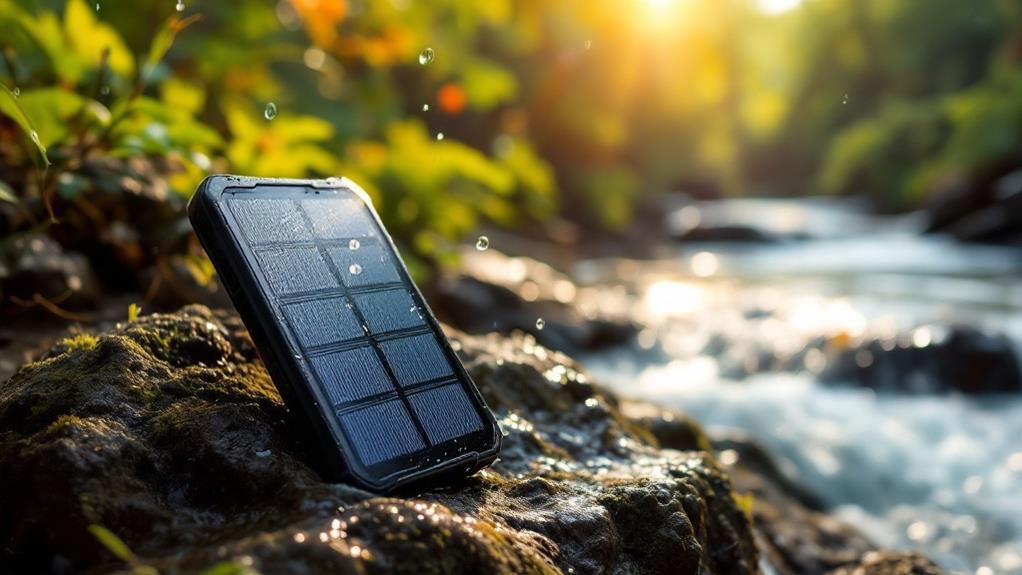
In the context of selecting the right solar charger for your needs, understanding your specific requirements is key. Start by evaluating what devices you plan to charge and how frequently. If you're powering multiple gadgets, you'll need a charger with higher output capacity. Look for models that incorporate advanced solar technology, as these are generally more efficient.
Charging efficiency is another vital factor. Efficient models can harvest more energy even in less-than-ideal conditions, like cloudy days. Pay attention to the charger's wattage and amperage ratings, as these will directly affect how quickly your devices charge. A higher wattage generally means faster charging times, but you need to balance this with portability if you're on the go.
Consider the environment you'll be using the charger in. If you're often in wet or rugged conditions, a waterproof and durable model is important. Some chargers come with built-in battery packs, allowing you to store energy for later use, which is handy for extended trips. By focusing on these aspects, you'll guarantee that your solar charger meets your needs while maximizing the benefits of solar technology.
Maintenance Tips for Longevity
Taking care of your solar charger is vital if you want it to last and perform efficiently. Regular maintenance guarantees your device stays in top condition, ready for any outdoor adventure. Start by adopting proper cleaning techniques. Gently wipe the solar panels with a soft, damp cloth to remove dust and debris. Avoid using harsh chemicals or abrasive materials that could scratch the surface.
Proper storage solutions are important when you're not using your solar charger. Store it in a cool, dry place away from direct sunlight and extreme temperatures. This prevents damage and prolongs its lifespan. Consider using a protective case to shield it from accidental knocks or falls.
Here's how you can maintain your solar charger effectively:
- Regular Inspection: Check for any signs of wear or damage. Addressing minor issues early can save you from costly repairs later.
- Battery Care: If your charger has a built-in battery, make sure it's not fully discharged before storage. Charge it occasionally to maintain its capacity.
- Connection Check: Inspect the cables and connectors for any fraying or corrosion to guarantee a reliable charge.
Weather Considerations
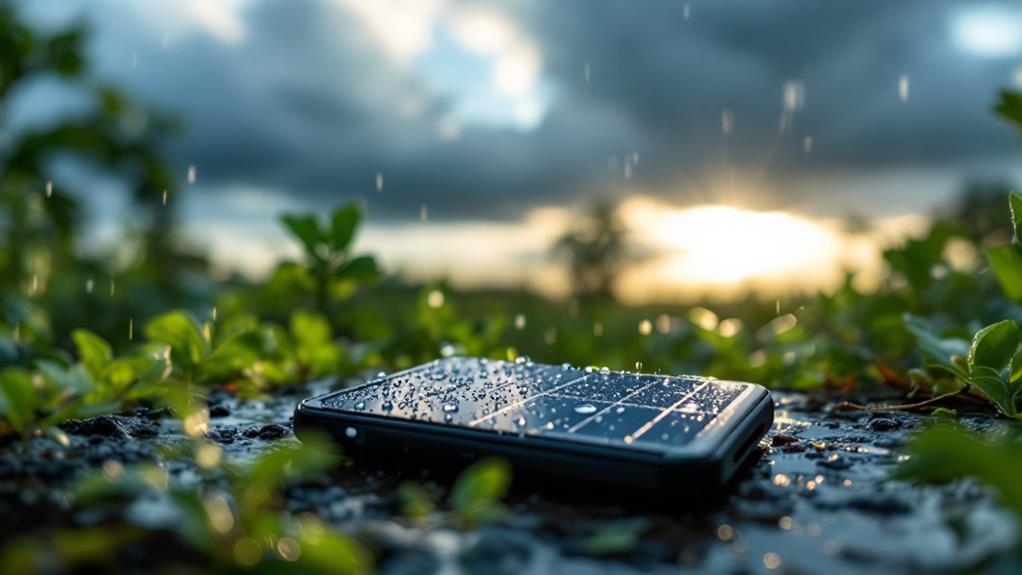
Safeguarding your solar charger from weather conditions is just as vital as regular maintenance. When you're using a solar charger outdoors, it's essential to reflect on how weather elements like rain and humidity can affect its performance and longevity. Rain exposure might seem harmless, but it can lead to water seeping into the components, potentially causing damage. Even if your solar charger is labeled as waterproof, it's smart to double-check the manufacturer's specifications to understand its limitations.
Humidity effects can also play a considerable role in how well your solar charger functions. High humidity levels can cause condensation inside the device, leading to short circuits or corrosion. To mitigate this, you should keep your charger as dry as possible and store it in a cool, shaded area when not in use.
Lastly, fluctuating temperatures can also impact performance. Extreme heat might cause the materials to warp, while cold can reduce the charger's efficiency. Being aware of these factors will help you avoid any unexpected hiccups and guarantee your solar charger remains reliable for all your outdoor adventures. By taking these weather considerations into account, you'll extend the life of your solar charger considerably.
Protecting Your Solar Charger
How do you guarantee your solar charger stays in peak condition? Proper protection is key to extending its lifespan and maintaining efficiency. Investing in solar charger cases and protective accessories can make a big difference. These items safeguard your charger from harsh elements and accidental damage, which is essential when you're out in the wild.
When selecting protective gear, consider the following:
- Durability: Choose cases made from robust materials that can withstand impacts and protect against scratches. This guarantees your solar charger remains unscathed during your outdoor adventures.
- Water Resistance: While some chargers might be waterproof, having a water-resistant case adds an extra layer of security. It helps keep moisture out, ensuring your charger functions at its best even if you get caught in a sudden downpour.
- Portability: Go for lightweight accessories that don't add unnecessary bulk. This makes it easier to carry your solar charger during hikes or camping trips.
Benefits of Outdoor Solar Charging
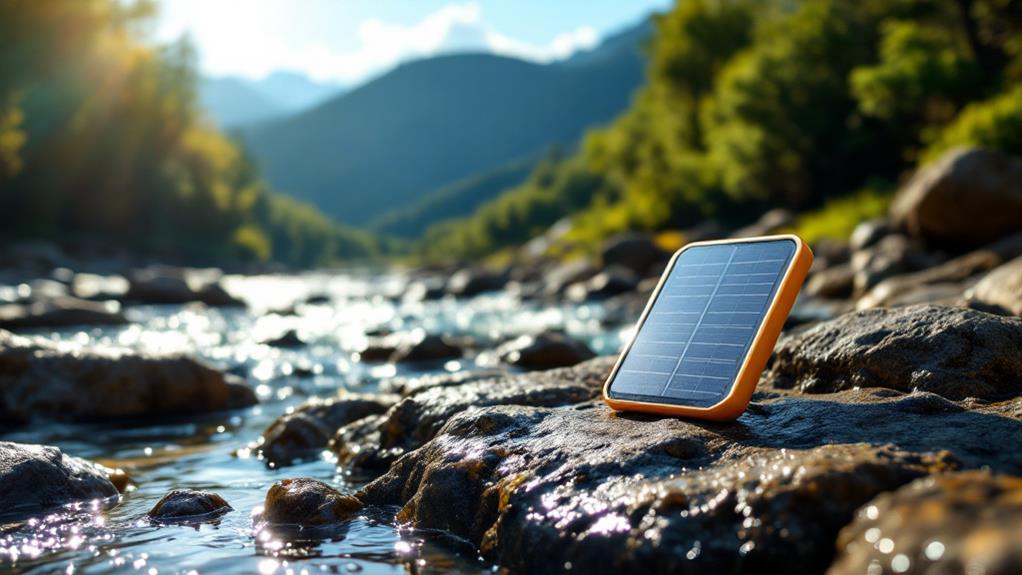
When you're out in nature, away from traditional power sources, outdoor solar charging offers a sustainable and convenient solution. Imagine you're hiking through a remote trail or camping under the stars—solar chargers give you the energy independence you need. They're an eco-friendly solution, harnessing the sun's power without harming the environment. These chargers bring portable power to your outdoor adventures, ensuring your devices stay charged without relying on bulky power banks or outlets.
One of the greatest advantages of outdoor solar charging is its device compatibility. Most solar chargers come with multiple ports, allowing you to charge a variety of devices at once, from smartphones to GPS units. This makes them incredibly versatile and practical. Furthermore, the charging efficiency of modern solar panels means you can quickly gather enough energy to keep your necessities powered up throughout your trip.
Sustainable technology has made significant strides, and solar chargers represent a key part of this innovation. They offer travel convenience, freeing you from carrying heavy batteries or worrying about finding a power source. By choosing outdoor solar charging, you're embracing a cleaner, greener way to power your adventures, making your trips more enjoyable and environmentally conscious.
